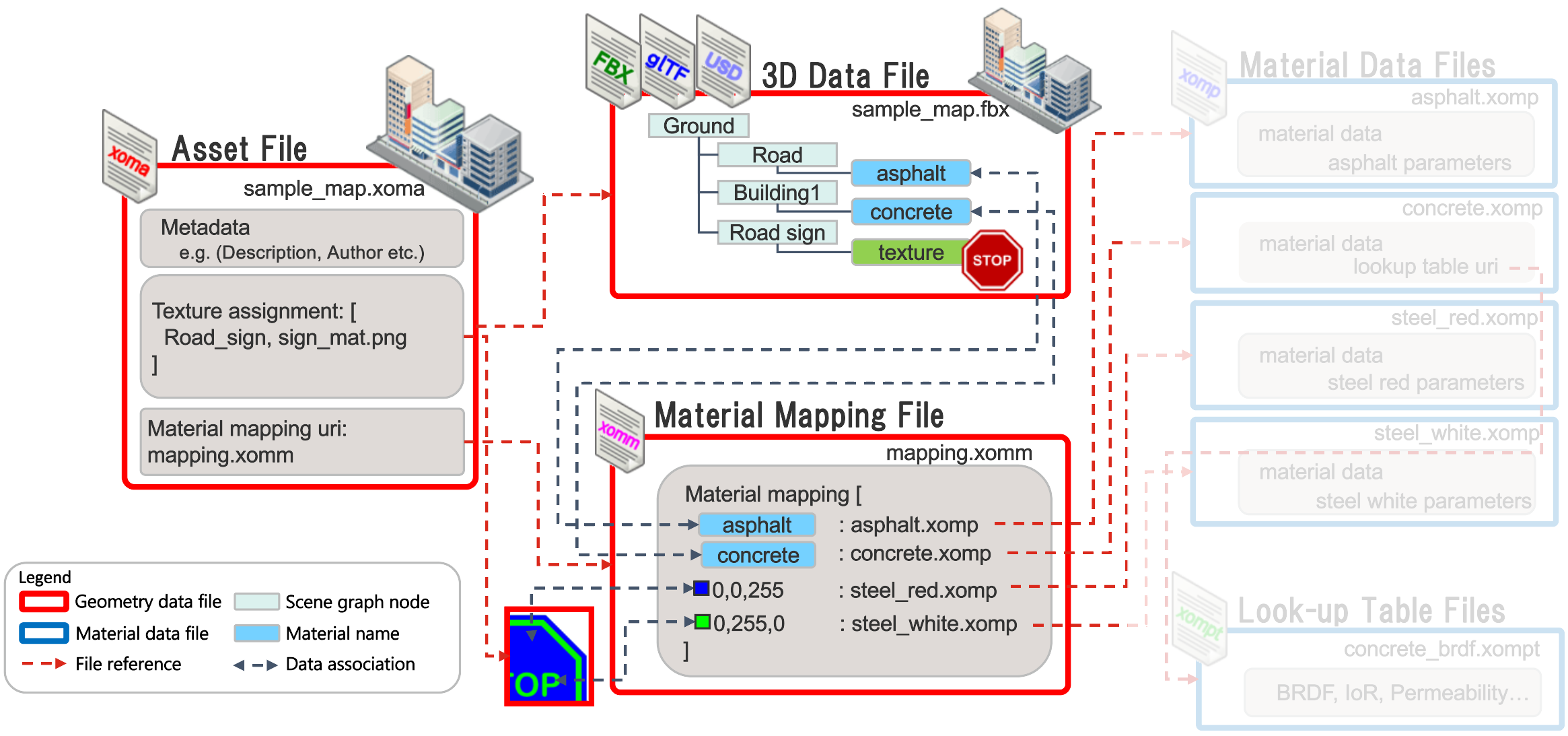7.1 Introduction
7.1.1 Motivation
A 3D asset is a digital entity that includes a 3D geometric representation of an object (also known as 3D model or 3D data file) along with its attributes and metadata. Common formats for storing the geometry and visual materials of 3D models include glTF, FBX, and USD.
However, these formats do not provide a standardized way to structure the geometry or provide extensive metadata storage and exchange capabilities. The ASAM OpenMATERIAL 3D standard addresses these needs.
This section includes all geometry-related definitions of ASAM OpenMATERIAL 3D, marked in red in Figure 2.
The ASAM OpenMATERIAL 3D asset file contains essential information relevant to the display and interactivity attributes of the 3D model in various computer applications. This includes metadata, material mappings, and semantic information like coordinate system and pivot point descriptions. The mapping of materials is stored in a separate material mapping file (.xomm), which is linked in the asset file. This setup ensures that the 3D asset (or 3D data file) can be consistently integrated into complex simulations or real-time environments with detailed material and dynamic properties.

7.1.2 Applications
To accurately replicate how sensors interact with objects in the real world, it is essential to model the behavior of sensors like cameras, radars, and lidars based on the material and geometric properties of objects in a virtual environment. For this purpose, assets that conform to the ASAM OpenMATERIAL 3D standards may be necessary in various scenarios, such as:
-
Accurate simulation of sensor perception: 3D assets are essential to ensure that sensors interact realistically with their environment. This includes both the visual representation, such as how objects appear and are detected by the sensor, and the material properties, like how objects reflect or absorb signals such as light or radar waves.
-
Dynamic and real-time environment simulation: 3D assets with changing materials or dynamic properties, such as moving parts like wheels, are necessary to simulate environments where the interaction between sensors and objects is constantly evolving.
-
Semantic labeling for machine learning applications: Assets with semantic information about sub-meshes, or labels for parts of objects, enable the system to understand and differentiate between different parts of an object, such as the wheels or windows of a car, aiding in accurate training.
-
Re-using 3D assets: Using the same asset file in different simulation tools is only possible if the structure of the assets is standardized.
7.1.3 Role of 3D exchange formats
3D exchange formats like glTF, FBX, and USD are widely used across various industries for standardized 3D model representation.
In the context of ASAM OpenMATERIAL 3D, these formats form the foundation for seamlessly integrating ASAM OpenMATERIAL 3D into existing 3D modeling and simulation workflows. Users can continue using their familiar tools and processes to manage geometry, while ASAM OpenMATERIAL 3D extends these formats by adding material properties, semantic information, and dynamic behaviors through additional files, such as asset files and material mapping files.